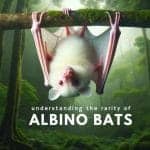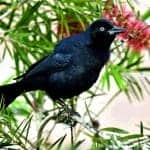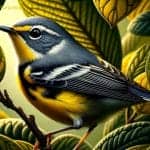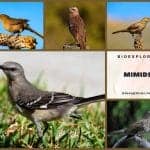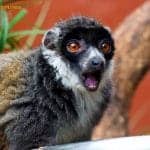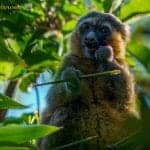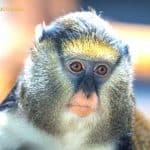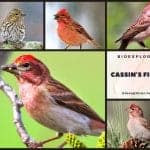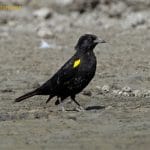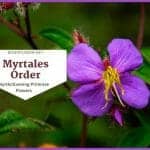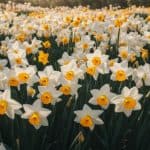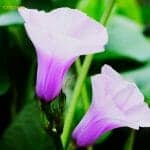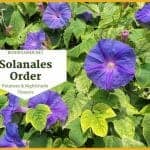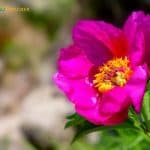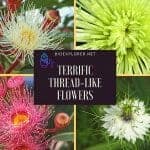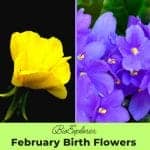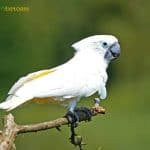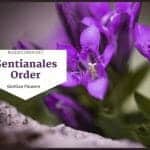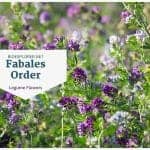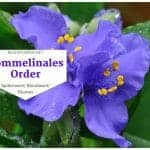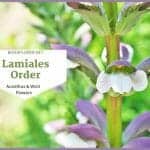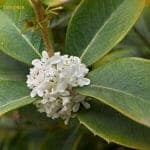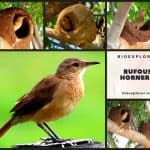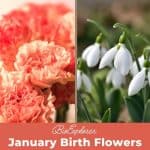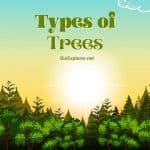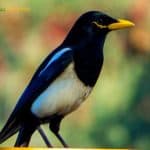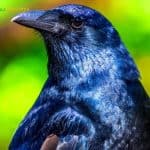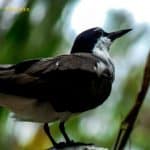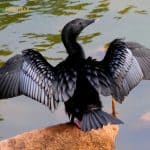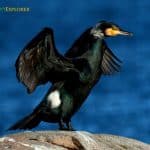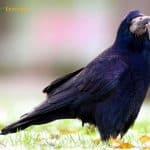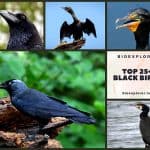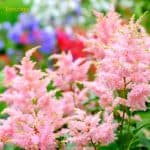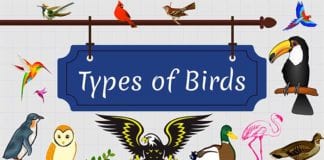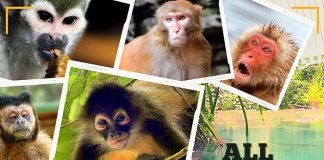top - search results
If you're not happy with the results, please do another search
Albino Bats
Albino Bats - Discover the genetic causes, physical traits, geographic hot-spots, and conservation efforts surrounding these rare pigment-less morphs that persist in tropical caves and forests through 60 global cases across 11 families.
Birds of Africa
Birds of Africa: Home to over 2,000 bird species, the African continent boasts some of the most spectacular avian diversity on Earth. From tiny sunbirds to massive ostrich, dazzling birds occupy every habitat across Africa's vast landscapes. Explore the top African birds here.
Greater Antillean Grackle
The Quiscalus niger, or Greater Antillean grackle, is a unique Caribbean songbird thriving in human habitats across Cuba, Jamaica, Hispaniola and Puerto Rico. Learn about this gregarious bird's classification, physical appearance, vocalizations, range, nesting habits, behavior, and relationship to humans.
Adelaide’s Warbler
Preview a dry forest specialist, Adelaide's Warbler (Setophaga Adelaide), whose preference for subtropical habitats, unlike mainland wood-warbler relatives, heightens both its inherent vulnerability and importance as a Puerto Rican endemic. Explore integrated conservation solutions that sustain warbler populations while supporting continued agricultural heritage across this region.
Mimids
The fabulously playful Mimidae family of Mimids - the mockingbirds, catbirds, thrashers & tremblers of the Americas - is overviewed with facts on evolution, vocal mimicry abilities, behavior, life histories and cultural symbolism of these often supremely talented songsters.
Gibraltar Monkeys
Gibraltar’s iconic Barbary macaques have roamed here 300+ years now, delighting visitors. Explore the history of Gibraltar monkeys on the Rock, their social behavior, role as a conservation priority species with ties to Britain’s fate.
Crowned Lemur
Learn about the endangered crowned lemur (Eulemur coronatus) - this medium-sized rainforest-dwelling primate from N. Madagascar has dense black & white fur and a distinctive orange arrowhead crown marking on its forehead.
Mongoose Lemur
Learn about the endangered mongoose lemur (Eulemur mongoz), a small Madagascar primate with red beards and bushy tails. Get fascinating facts on their rainforest habits, unique behaviors, seed dispersal ecology, and major threats driving their worrying decline.
Golden Bamboo Lemur
Explore all about the magnificent yet critically endangered golden bamboo lemur of Madagascar. This unique primate depends almost entirely on giant bamboo for food and shelter. Read about their adaptations, ecology, reproduction, conservation efforts, and threats facing their fragile habitat.
Marmoset Monkeys
From the lush Amazon rainforests to the arid caatinga scrubs of northeastern Brazil, miniature marmoset monkeys swing through diverse New World landscapes. Explore all 24 species of marmoset monkeys here.
Yellow Monkeys
Yellow Monkeys: Monkeys exhibit a dazzling array of fur colors and patterns, but a select group stands out for their unique yellowish hues blending into tropical forest backdrops. Yellow monkeys include both New World primates like spider monkeys and capuchins and Old World species such as macaques, langurs and gibbons.
Types of Crows
Crows (Corvus genus - Corvidae family) are among the most widespread, recognizable, and intelligent birds across diverse habitats worldwide. Explore all 43 types of crows here.
Albino Monkeys
Albino monkeys, also known as monkeys with albinism, lack pigmentation in their skin, hair, and eyes. Discover more about these unique creatures and their genetic condition.
Cassin’s Finch
Learn about the Cassin's Finch, a unique songbird of western North American mountain forests. This adaptable finch has complex songs, nomadic habits, and thrives across diverse coniferous habitats. Gain insights into this little-known species' ecology and importance.
Yellow-winged Blackbird
The yellow-winged blackbird (Agelasticus thilius) is a medium-sized songbird across much of South America. Males are jet black with bright yellow shoulder patches, while females are streaky brown.
Order Myrtales / Myrtle Flowers
Myrtales, the myrtle order, are trees, shrubs, herbs, and lianas primarily distributed in the tropics and warmer regions worldwide. Myrtales members have phloem tissue on each xylem side, 4 or 5 sepals, 4 or 5 petals, mostly bisexual flowers, and often non-endospermic seeds. Known species of Myrtales are myrtles, evening primroses, Fuschia, and Eucalyptus.
Order Ericales / Heathers and Primrose Flowers
Ericales is comprised many economically important flowering plants like Brazil nuts, kiwifruit, and primrose. Ericales is very diverse, involving chiefly trees and terrestrial shrubs that are cosmopolitan in distribution. Some families of Ericales possess the ability for aluminum accumulation. Hardy kiwi, Orange jewelweed, wand plant, lama tree, and Octotillo flowers are some examples of Ericales.
The 25 Most Captivating Narcissus Flowers You Need to Know!
Explore the mesmerizing world of Narcissus Flowers with our detailed guide. Dive into the top 25 daffodil varieties, from the classic Trumpet to the exotic Pheasant's Eye.
Wild Narcissus
Narcissus poeticus is a flowering plant of the order Asparagales. This species is native to Central and Southern Europe. The Wild Narcissus plant is toxic. The most poisonous parts are the bulbs.
Order Rosales / Garden Roses, Apples, Strawberries
Rosales is commonly called the rose order that contains dicotyledonous flowering plants. Explore their characteristics, families, distribution, and example species. Apart from a wide variety of roses, other products of Rosales include apples, cherries, peaches, plums, pears, raspberries, strawberries, and figs.
Order Nymphaeales / Water Lilies
Order Nymphaeales is composed of water lily flowers. It contains 3 families (Hydatellaceae, Cabombaceae, and Nymphaceae). The example flower species include Europian white water lily, Dotleaf water lily, Blue lotus, Amazon water lily, Fanwort, Green Cobomba, and more.
Order Garryales / Silk Tassels Flowers
The Silk tassel order, Garryales are trees or shrubs distributed in North America and Asia. The members of the Garryales have opposite and exstipulate leaves, distinct male and female plants aggregated in catkins, usually sepaline perianth, and endospermic seeds. The larkspur, Japanese laurel, and silk tassels are the example species of the Garryales order.
Little Larkspur
Delphinium bicolor is a perennial plant of the Buttercup (Ranunculaceae) family. The stems of the Little Larkspur have a height of 4-24 inches. The Little Larkspur plants can absorb toxic substances, like herbicides, pesticides, and pollutants.
Ipomoea
Ipomoea belongs to a family of flowering plants known as Morning Glory, which are unruly vines, deeply rooted in Mexico's flora. They have blue, purple, lavender, or pink flowers that fade at night and open every morning.
Order Solanales / Potatoes & Nightshade Flowers
Solanales or the potato/nightshade order of the flowers belong to the core asterid clade, manifesting a global distribution. The plants of Solanales possess root stalks or tubers, simple, alternate, and exstipulate leaves, showy flowers, and typically 5-merous floral parts. The Solanales plants are monoecious, andromonoecious, or dioecious. Example species under Solanales order involve the highly cultivated flora of morning glory, potato, eggplant, and tomato.
Helenium
Give your landscape a glorious late-season color with Helenium, a light-demanding perennial that offers long-lasting blooms from mid to late summer to fall every year. It features daisy-like flower clusters (2-inches in diameter) with distinctive pale yellow wedge-shaped rays and dome-shaped, dull yellow central discs.
Common Peony
Paeonia officinalis is a perennial herb native to the mountainous regions of Southern Europe. The Common Peony plants belong to the order Saxifragales and the family Paeoniaceae. The genus Paeonia comes from the Greek name Paeon meaning a god’s physician.
Thread-Shaped Flowers
Thread-like flowers are a relatively new trend, and they're coming in droves. From thread-like chrysanthemums to thread-like lavender, the variety is endless. Thread-shaped flowers are a fantastic way to add flair to your everyday florals without going overboard with color and design.
February Birth Flowers
Discover the beauty and symbolism of February's birth flowers: violets and primroses. Dive into their rich history, meanings, and unique facts.
November Birth Flowers
Delve into the world of November birth flowers – chrysanthemums and peonies. From symbolism to stunning arrangements, find inspiration today!
October Birth Flowers
Discover the meaning behind October birth flowers, Marigold and Cosmos. Explore their symbolism and find the perfect gift for autumn birthdays!
March Birth Flowers
Discover the magical meanings behind daffodils and jonquils, March's birth flowers. Find out how to choose the perfect floral gift for your loved one!
White Cockatoo
Discover the breathtaking beauty of the White Cockatoo (Cacatua Alba), their characteristics, diet and several interesting fun facts about them here.
What Do Marine Biologists Do?
Discover how marine biologists unlock the mysteries of aquatic life and protect our oceans' delicate ecosystems. Immerse yourself in this captivating field today!
Order Gentianales / Gentian Flowers
The Gentianales (Gentians) is an order of flowering plants involving herbs, shrubs, undershrubs, lianas, and small trees primarily distributed worldwide. Plants of Gentianales mostly have opposite leaves, interpetiolar stipules, bisexual flowers, mostly fused sepals and petals, 4-5 stamens, and 2 carpels. Important species under Gentianales are coffee, periwinkle, oleander, and gentian.
Order Fabales / Legume Flowering Plants
Fabales is an order of dicotyledonous flowering plants belonging to the Rosid I group of the core eudicots. The order is divided into 4 families called Fabaceae, Polygalaceae, Quillajaceae, and Surianaceae. Soybeans (Glycine max), Garden peas (Pisum sativum), Peanuts (Arachis hypogaea), and Alfalfa (Medicago sativa) are some of the plants classified under this order.
Order Commelinales / Spiderwort & Bloodwort Flowers
The plant order Commelinales is a highly diverse group of APG IV classification systems. The most common and useful plants which represent the value of Commelinales are its ornamental plants which are primarily grown in houses and outdoors. Spiderworts, Bloodworts, Blumes, Frogmouth, Wolly waterlilies, and Pickerel-weed Plants are some of the examples in Commelinales order.
Order Lamiales / Acanthus & Mint Flowers
Lamiales is an ordering of flowering plants with most members found worldwide. The species of the Lamiales usually have opposite leaves, bilaterally symmetrical and often bilabiate corolla, five petals fused into a tube, four or fewer fertile stamens, and a superior ovary with fused carpels. The mints, olive, bladderworts, and plantain are plants under the Lamiales order.
Order Boraginales / Forget-me-not & Comfrey Flowers
Boraginales is an order of flowering plants consisting of herbs, shrubs, or trees worldwide. The forget-me-nots, comfrey, and borage are ornamental plants under Boraginales. Boraginaceae (120 genera and 2000 species) are found in temperate and tropical regions.
Holly
Holly (Ilex aquifolium) has established itself as a staple in holiday décor for several reasons. This evergreen tree is easy to incorporate into any aspect of your décor. Holly is dioecious, which means that female and male flowers are found on different trees. The flowers are white with 4 petals.
Hibiscus Varieties
Dive into the vibrant world of hibiscus! Explore 25+ stunning varieties, from rare native species to popular garden favorites. Learn about their unique characteristics, care tips, and fascinating facts. Perfect for gardeners and flower enthusiasts alike. Discover the beauty and diversity of these tropical treasures!
Bell-Shaped Flowers
The bell-shaped flowers are trendy because they are known for their beauty, colors, and variations. Featuring green, blue, purple, white, pink, and many colors, these bell-resembling flowers are used for many purposes such as decoration, using it in weddings, making wreaths, and lovely gifts.
Rufous Hornero
Explore the Rufous Hornero, South America's avian marvel. Dive into its unique habits, cultural significance, and conservation efforts. A birdwatcher's delight!
January Birth Flowers
Explore January birth flowers, Carnations & Snowdrops. Learn their symbolism, connection with horoscopes, care tips, and cultural significance.
Explore 13 Different Shapes of Bacteria
The prokaryotic kingdom consists of unicellular microscopic microorganisms called bacteria. Bacteria are simple single-celled organisms that lack chlorophyll pigments. The rigidity of its cell wall determines the shape of a bacterium. Explore 13 different shapes of bacteria here.
Types of Trees
Discover the diverse types of trees, from deciduous to evergreen. Enjoy vivid pictures, and learn their roles in ecosystems and their conservation efforts.
Great Eared Nightjar
In the heart of the night, when the world seems to hold its breath, the Great Eared Nightjar takes flight. This nocturnal bird, known scientifically as Lyncornis macrotis, is a captivating creature that has long intrigued ornithologists and nature enthusiasts.
Yellow-billed Magpie
The Yellow-billed Magpie (Pica nuttalli) is a vibrant and lively bird species endemic to California, making it a unique and special part of the state's avian diversity. Explore these sociable black birds unique characteristics, distribution, and fun facts here.
Fish Crow
The Fish Crow (Corvus ossifragus) is a common bird in some parts of the Southeast, resembling a smaller version of the American Crow but with a more nasal voice and a preference for areas near water. All black fish crows have black feathers, dark brown eyes almost black, black legs, and black beaks. Explore their characteristics and fun facts here.
Sooty Tern
The next black and white bird, Sooty Terns, is one of the most widespread tern species. Explore their unique physical attributes, social behavior, and intriguing adaptations, such as unihemispheric sleep that allows them to fly for months. Discover their significant cultural role on Easter Island and more.
Black Scoter
Black Scoters are a species of duck that form sizable winter flocks along the Atlantic and Pacific coasts. These blackbirds have 4 species: Black Scoter, Surf Scoter, Common Scoter, and White-winged Scoter. Explore Black Scoter characteristics, diet, and facts about them here.
Anhinga
Only a head that resembles a snake may be seen above the water, while a dark body swims covertly through the lake. The creature that sounds like the Loch Ness monster is actually an anhinga. This black waterbird stabs fish with its dagger-like beak while swimming underwater.
Little Cormorant
These smaller yet equally intriguing relatives of the Indian cormorant charm with their unique physical attributes and social behavior, Little Cormorant is another blackbird on our list. Explore its physical characteristics and fun facts here.
Great Cormorant
Explore the world of the Great Cormorant, a large seabird known for its unique physical traits and exceptional fishing skills. Discover its grooming habits, diving techniques, and swimming agility. Also known as the Great Black Cormorant, Black Shag, and Large Cormorant.
Rook
Discover the fascinating world of rooks, large Corvidae birds found throughout Eurasia. Learn about their appearance, expert egg-robbing skills, unique anting behavior, special memory, and preference for local breeding grounds. Also, explore the similarities and differences between rooks and their crow cousins.
Black Birds
Discover the top 30+ black birds' mesmerizing beauty, unique behaviors, and fascinating facts. Dive into a symphony of wings and feathers as we explore these captivating dark birds shedding light on their mysterious allure.
Astilbes
Discover the vibrant world of Astilbes, perennial flowering plants that thrive in the shade. Learn about their unique characteristics, astilbe varieties, care tips, and how they can add a touch of elegance and color to your garden.
Costa Rica Monkeys: A Journey into the Rich Biodiversity!
Explore the diverse world of Costa Rica's monkeys in our comprehensive guide. Learn about the four unique species, their habitats, threats, and conservation efforts. Discover tips for monkey spotting during your visit to this biodiversity hotspot.
Mexico Monkeys
Explore the unique world of Mexico's endemic primates, the Mexican Spider Monkey and the Mexican Howler Monkey. Learn about their habitats, behaviors, cultural significance, and conservation efforts to protect these endangered species.
16 Immortal Animals Who Defy Death
While all cells grow, age, and die eventually, here is a list of the 16 amazing immortal animals for whom this rule does not seem to apply.


